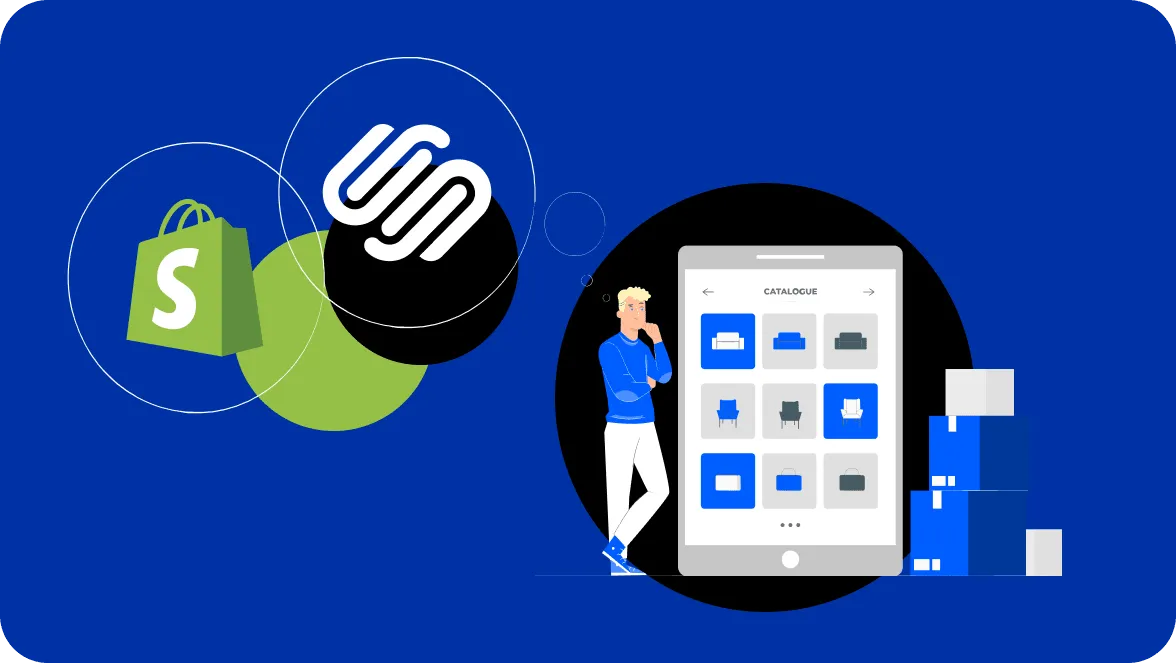
Running an e-commerce business is a big deal. All businesses are forced to go digital. Never before has the e-commerce niche felt so bright — by 2025 e-commerce revenue in the USA will be about $ 560 million. These figures speak for themselves — online retail is developing and will keep going.
The time goes on and competition is increasing on the market. But how do you build an e-commerce website that will convert leads into sales and stand out over rivals? The concept of each new e-commerce store must be thought out to the smallest detail: from choosing the platform and store design to product card content. Here I’ve collected some step-by-step e-commerce website tips that will help you develop a stable e-store.
How do you choose the best way to create e-commerce website?
The most popular types of platforms for creating an e-commerce website are open source and Software-as-a-service (SaaS), along with the headless approach. Let’s sort it out, as each type of platform is designed for specific business needs.
What are open source platforms?
Open source software is a program that is released to the public by the copyright holder. Everyone can use the program, change the code, customize it to business requirements and distribute it for personal purposes. The best-known open source solutions are WooCommerce and Magento.
On the other hand, working with open source solutions requires advanced coding skills. Such solutions often have security issues, so it is worth hiring software developers who will constantly maintain your website and provide security to your online business. Read the article “Which Platform Is the Best for E-commerce Website” to know more about the advantages and disadvantages of the most common e-commerce open source solutions.
What is SaaS and how does it work?
Software-as-a-service (SaaS) is cloud-based software that provides a ready-made solution for its subscribers. The best e-commerce SaaS platforms are Shopify and BigCommerce. The great benefit of SaaS is that most of technical staff is already handled, like hosting, robust security, or software updates.
It was created for e-commerce purposes, that’s why it reflects popular business requirements such as quick launch, design templates, SEO optimization, website load, a wide range of plugins, easy checkouts, and much more. You don’t have to develop website features from scratch.
How does the headless approach work?
Headless commerce is a new approach that decouples the frontend from backend parts of your e-commerce store. It allows you to manage the frontend part, for example, design or content, independently without updating the backend. Still, these two parts are connected via the Application Programming Interface (API). Businesses who applied a headless approach to the website significantly benefit from the high development speed, limitless SEO optimization, UI development without constraints, and long-term savings.
By implementing headless CMS, you are able to reach limitless customization and personalization. It means that in a short time, the marketing team will be able to create unique offers and promo pages, avoiding typical cliches of e-commerce stores.
Also, headless CMS allows you to interact with different platforms and to go omnichannel. Creating content in one place, CMS, you can then distribute it through various channels: mobile apps, chatbots, websites. The process of launching a website takes less time. It provides a quick start when deploying a new page or content. There’s no need to hire developers, as website admins can create necessary updates by themselves in a short time. With the headless approach, you benefit from unlimited website capabilities, cutting expenses on development and implementing changes faster.
Learn more vital information about headless CMS in our recent article.
Find a software development company for building e-commerce website
For building e-commerce site, it is vital to find a reliable software partner, as this cooperation will save you time and money. An experienced engineering team will advise you on how to solve your issues and achieve business goals by implementing the right features, platforms, integrations, and design.
How do you find a good outsourcing company?
You need to start with market research. Pay attention to the domain expertise of the vendor, as the more experienced a team is, the more likely it will create a stunning product for you. Then, look for feedback and reviews from previous clients. To find real feedback, you can use independent platforms like Clutch or GoodFirms. There you will find all the necessary information – ratings, reviews, proven feedback, portfolio, and price range.

The CEO at DigitalSuts, Artem Semenko, is sure that the main criteria for a good outsourcing company are:
proper expertise
excellent communication “This is one of the most important parts of every collaboration. The effectively managed communication and provided transparency allow the client to stay calm and happy as there are few questions, there is a clear understanding of what is going on, and there is no need for double-checking.”
We’ve recently collected “10 Best Practices of Software Product Management for Small and Medium-sized Companies”. This material is a must for everyone who is going to develop an IT product. Read it and learn what the stages of software development are, how to estimate a project, and what best practices we use to deliver projects on time.
Find out what you want to achieve with the website
The most important function of an online store is To Make Sales. However, when customers visit a website, many factors influence their purchasing decision. An e-commerce store should contain more than just information about the product and the price. It is important to help your visitor find and buy a product. For example, your audience is multicultural. Then you need to determine how many languages will be provided on the site, and what integrations you need to deliver it.
The same rule works for all website functions — intuitive navigation, mobile friendliness, social proof, easy checkout, fast loading speed or live chat with a customer support team. Make a list of business requirements where you will determine all functions that your website should have.
Purchase a domain name
Linking a website to the domain name is one of the last steps in website development. But if you already know what the website will be called, then it is better to buy a domain name right away so that no one else would buy it.
It is important to know best practices, which can help to choose the correct domain name before you build your own e-commerce website:
Avoid creative spellings — a domain name should be easy to remember and type.
Don’t use generic names — they are difficult to remember or similar to the names of other companies.
Choose a short name — it is easier to remember and spell.
To purchase a domain name you can use the most popular and reliable Domain Name System (DNS) provider — GoDaddy.
Customize your e-commerce template
A well-executed e-commerce store design plays a key role in online business. It enables your store to attract and retain customers and increase sales. Customize your design template according to best practices. An online store should be simple and easy to understand, mobile responsive, have intuitive navigation, and the same color style.
Best design practices are collected in our new article “7 Design Tactics for Your Shopify Website”. Read it and find out what to pay attention to when building an e-commerce store.
Prepare product descriptions
Product pages dominate an online store because they show your customers exactly what you are selling. Take time to create quality content that contains:
Description of the product — parameters, colors, method of application. By adding all the basic information about a product, you convey the value of the product to the customer. You also allow bots to index your content better and improve your SEO.
Product images — should be in a high-quality format, the same size, and illustrate the item from different angles.
Product video — should be clean and clear with 360-degree shots of the item in use.
Making valuable product descriptions can positively affect your SEO and marketing outcomes. The more product information you give on different pages, like category page, product page or blog, the more chances for a good ranking you get by search engines. Spreading unique content on various pages, creating unique tags and titles, avoiding identical values and duplicated content — these simple SEO tips will help you to optimize your e-commerce website better.
Testing the site
After all the previous steps have been completed, before launching the site, your online store should be thoroughly tested. Here is the list of website functions to test before publishing:
Filters and the product search string
Adding products to the cart
Checking the work of sections of the site
Checkout functions
Mobile responsiveness
Buttons and links
Making your own e-commerce store is a big and challenging task. When your customers make a purchase, everything matters — design, navigation, technical convenience, content, the platform on which the site is made. We have profound expertise in the e-commerce domain and know the best way to build the e-commerce website that converts leads into sales. Write to us through the contact form or chatbot if you are planning to create an e-commerce website or if you need our support with an existing one.




































Was this helpful?
0
No comments yet